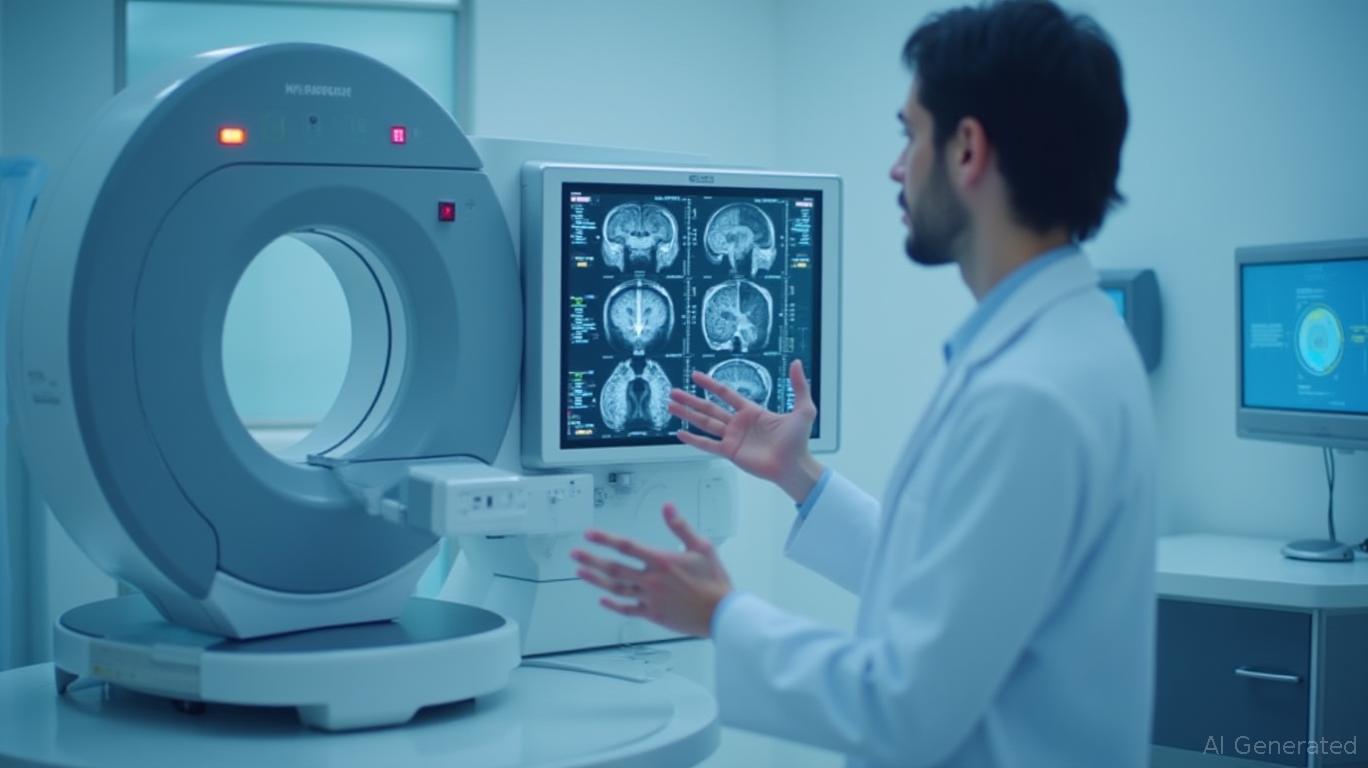Hyperfine, Inc.: Navigating Regulatory Waters and Innovating with AI to Revolutionize MRI Accessibility
The healthcare tech sector is bracing for a paradigm shift as Hyperfine, Inc. (NASDAQ: HYPR) accelerates its push to democratize access to magnetic resonance imaging (MRI). At the heart of this transformation is a strategic leadership overhaul that blends deep regulatory expertise with cutting-edge AI innovation. For investors, this isn't just about incremental growth—it's about positioning to capitalize on a $10 billion portable MRI market expected to balloon by 2030. Let's dissect how Hyperfine's executive hires are turning regulatory hurdles into stepping stones and AI into a competitive moat.

Regulatory Mastery: Unlocking Access to New Markets
Hyperfine's recent hires—Chi Nguyen (Vice President of Office Strategy) and Rafael Donnay (Vice President of Hospital Strategy)—are not just executives; they're regulatory architects. Their combined 40+ years of experience in navigating healthcare compliance is directly tied to Hyperfine's aggressive expansion plans:
- Neurology Offices: Chi Nguyen's track record at NeuroPace and Johnson & Johnson positions her to capitalize on the 2024 CMS reimbursement update, which now covers MRIs in accredited neurology offices. With 2,400 U.S. neurology clinics now eligible, her pilot program aims to fast-track adoption before a mid-2025 full rollout.
- Hospital Systems: Rafael Donnay's prior success at Philips and CeriBell ensures Hyperfine's Swoop® MRI integrates seamlessly into emergency and critical care workflows. His focus on health economics aligns with hospital cost pressures, making portable MRI a cost-effective alternative to traditional bulky scanners.
The cherry on top? Neela Paykel, Hyperfine's General Counsel since 2021, has quietly navigated FDA clearances and international CE approvals. Her work ensures
stays compliant while scaling globally—a critical edge in markets like Europe, where reimbursement policies lag behind the U.S.AI-Driven Innovation: The Swoop® System's Secret Weapon
Hyperfine's leadership in AI isn't just buzz—it's baked into its hardware and software. Tom Teisseyre, Chief Product Officer and Verily alum, spearheaded the June 2025 FDA clearance of the next-gen Swoop® system with Optive AI™. This upgrade:
- Enhances usability: Clinicians can now interpret scans faster, reducing diagnostic delays.
- Improves image quality: A must for adoption in high-stakes settings like emergency rooms.
- Lowers costs: AI-driven automation reduces technician training time, a key barrier to widespread adoption.
With AI now embedded in workflows, Hyperfine isn't just selling hardware—it's offering a platform. This shift mirrors the success of companies like GE Healthcare or Philips, which dominate through software-enabled ecosystems.
Market Penetration: From Hospitals to Clinics, a $10B Opportunity
Hyperfine's dual-pronged strategy targets two massive markets:
1. Hospitals: 9,600 U.S. sites (emergency, critical care) where Swoop® can replace outdated imaging tools.
2. Outpatient Clinics: Neurology offices and imaging centers now eligible for reimbursement, thanks to Nguyen's regulatory prowess.
The numbers are compelling: Hyperfine's revenue rose 17% in 2024, despite a Q4 dip, with Swoop® sales jumping 29% year-over-year. With a 2026 cash runway, the company can weather short-term headwinds while scaling production and refining its AI algorithms.
Risks on the Horizon
No investment is risk-free. Hyperfine's success hinges on:
- FDA acceptance of future AI iterations: Delays could stall growth.
- Reimbursement battles: CMS and international payers may drag their feet.
- Competition: Players like Canon Medical and Hitachi are eyeing the portable MRI space.
Investment Thesis: A Long-Term Play with Near-Term Catalysts
For investors, Hyperfine's moves are a masterclass in strategic execution. The hires and tech upgrades create three near-term catalysts:
1. The mid-2025 neurology office rollout.
2. Optive AI™ adoption data from hospitals.
3. International sales in Europe and Asia.
Recommendation:
- Hold for the long term: Hyperfine's moat in AI and regulatory agility positions it to dominate a fragmented market.
- Watch for Q3 2025 updates: Early neurology clinic data could spark a rerating.
- Consider options or dollar-cost averaging: Mitigate volatility tied to regulatory approvals.
Conclusion
Hyperfine isn't just building MRI machines—it's rewriting the rules of healthcare access. With leaders who understand both the FDA's language and the clinic's needs, this company is primed to turn AI and regulatory know-how into sustained growth. For investors willing to look past short-term hiccups, Hyperfine's journey from startup to industry disruptor could be one of the decade's best stories.
This analysis is for informational purposes only. Consult a financial advisor before making investment decisions.

Comments
No comments yet